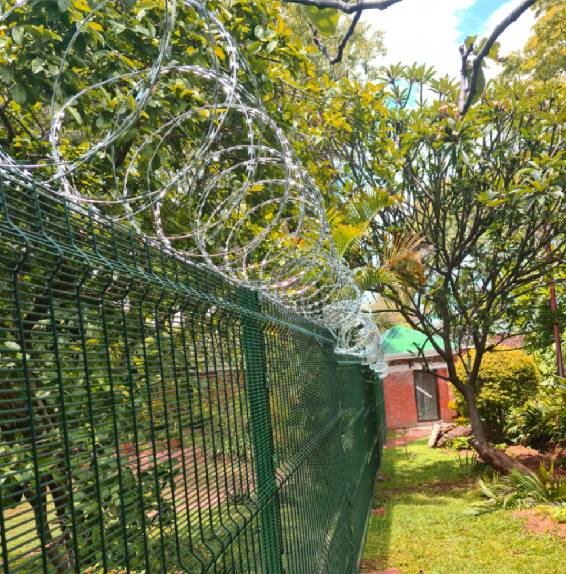hog mesh fence
Understanding Hog Mesh Fence A Durable Solution for Your Fencing Needs
When it comes to fencing solutions, an array of options is available to meet various needs and preferences. One popular choice among landowners, farmers, and ranchers is the hog mesh fence. This type of fencing is not only robust and durable but also provides an effective barrier against livestock and wildlife. In this article, we will explore the features, benefits, and applications of hog mesh fence.
What is Hog Mesh Fence?
Hog mesh fence, often referred to as cattle panel or wire mesh fence, consists of a series of horizontal wires secured to vertical wires, creating a rectangular mesh pattern. The name comes from its primary use, which is to contain hogs and other livestock. Typically made from galvanized steel, hog mesh fence is designed to withstand harsh weather conditions and the wear and tear associated with farm life.
The mesh size can vary, but the common dimensions usually range from 4 to 6 inches between the vertical wires. This allows for adequate containment while ensuring the animals cannot easily escape. The fence is often available in different heights and lengths, making it adaptable to numerous applications.
Benefits of Hog Mesh Fence
1. Durability One of the standout features of hog mesh fencing is its durability. Made from high-quality galvanized steel, it resists rust and corrosion, ensuring a long lifespan. This durability makes it suitable for various climates, from scorching heat to harsh winters.
2. Safety for Animals Hog mesh fences are designed to keep livestock safe and secure. The tight mesh prevents animals from escaping while also protecting them from potential predators. This security is essential for farmers and ranchers looking to safeguard their livestock.
3. Versatile Applications Beyond just containing hogs, this fencing can be used for a range of purposes. It is suitable for enclosing cattle, sheep, and smaller animals. Additionally, many people use hog mesh fences for garden enclosures, boundary fencing, and even as a decorative feature in landscaping.
4. Low Maintenance Once installed, hog mesh fences require minimal maintenance. Unlike wooden fences that can rot or require regular repainting, the galvanized finish on hog mesh fencing means that most maintenance consists of occasional cleaning to remove dirt and debris.
hog mesh fence

5. Cost-Effective When considering the long-term benefits and durability, hog mesh fences can be a cost-effective solution. While the initial investment may be higher than some other fencing options, the longevity and reduced maintenance needs make it a smart choice economically.
Installation Tips
Installing a hog mesh fence is a task that can be completed by most individuals with basic DIY skills. Here are a few tips to ensure a successful installation
1. Plan Your Layout Before starting, measure the area where you plan to install the fence. Consider gates and corners, and make sure to mark your layout clearly.
2. Choose the Right Posts Using sturdy posts, such as wooden or metal T-posts, is essential for maintaining the stability of the fence. Ensure the posts are securely anchored in the ground.
3. Stretch the Mesh When attaching the hog mesh to the posts, ensure that it is stretched tightly to prevent sagging. Using fencing staples or wire ties will help secure it effectively.
4. Regular Checks After installation, periodically check the fence for damage or sagging. Addressing issues early can prolong the life of the fence.
Conclusion
Hog mesh fence is a versatile, durable, and cost-effective solution for all your fencing needs. Whether you are a farmer looking to contain livestock or a homeowner wishing to enhance your garden, the benefits of hog mesh fencing are clear. With its longevity and minimal maintenance requirements, it can be a valuable investment for any property. If you are considering a new fencing option, the hog mesh fence could be the perfect choice to meet your requirements.
-
Space-Saving Chain Fence Hacks Vertical Gardening with Cyclone MeshNewsJul.16,2025
-
Innovations in Iron Nail Wire Production for Modern ConstructionNewsJul.16,2025
-
Creative Uses of Wire Netting Fence in Modern Landscape DesignNewsJul.16,2025
-
Barbed Wire Fence Innovations in Anti-Climb TechnologyNewsJul.16,2025
-
Architectural Uses of Umbrella Nails for Aesthetic Roof DesignsNewsJul.16,2025
-
Architectural Uses of Razor Barbed Wire in Secure Urban DesignNewsJul.16,2025




